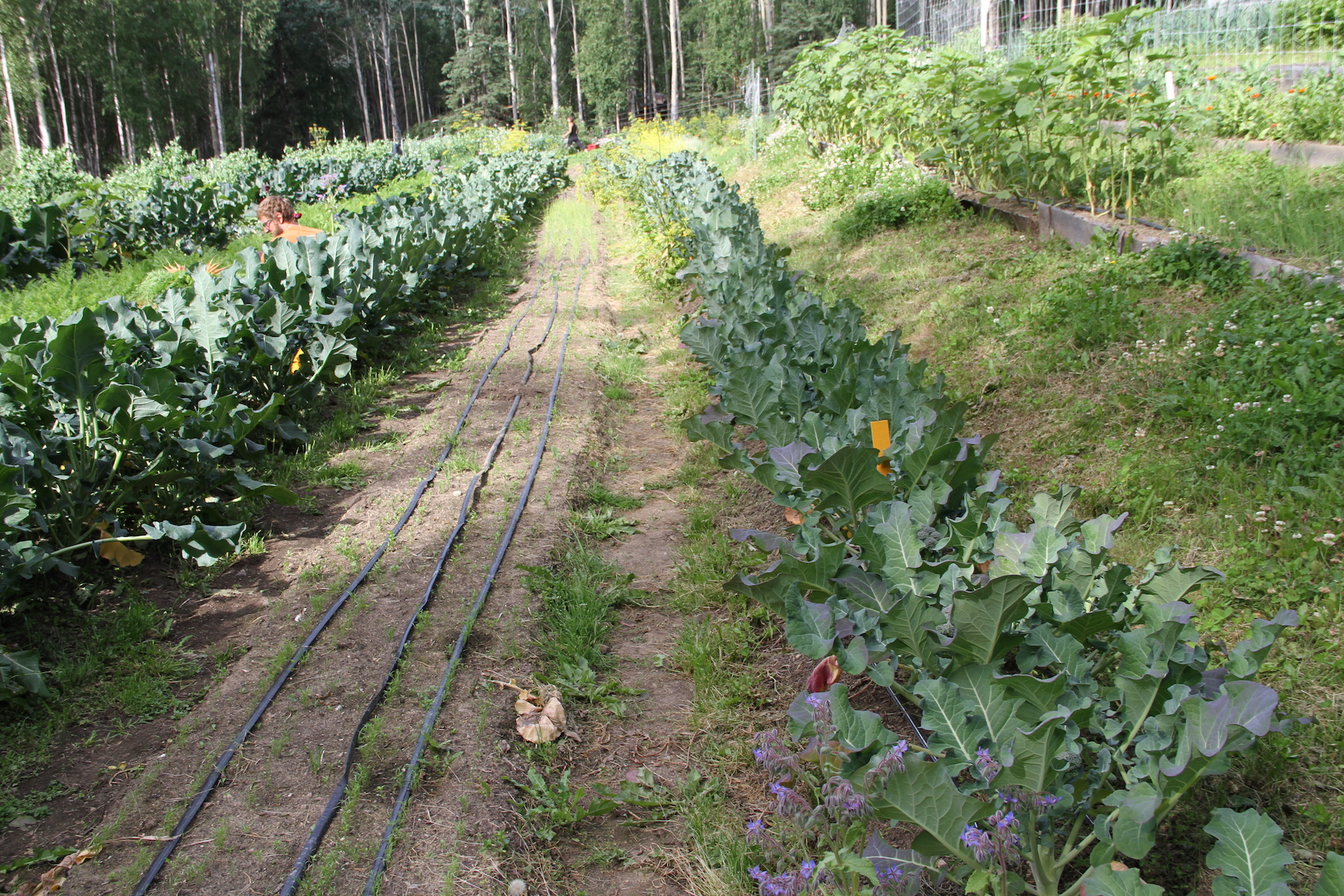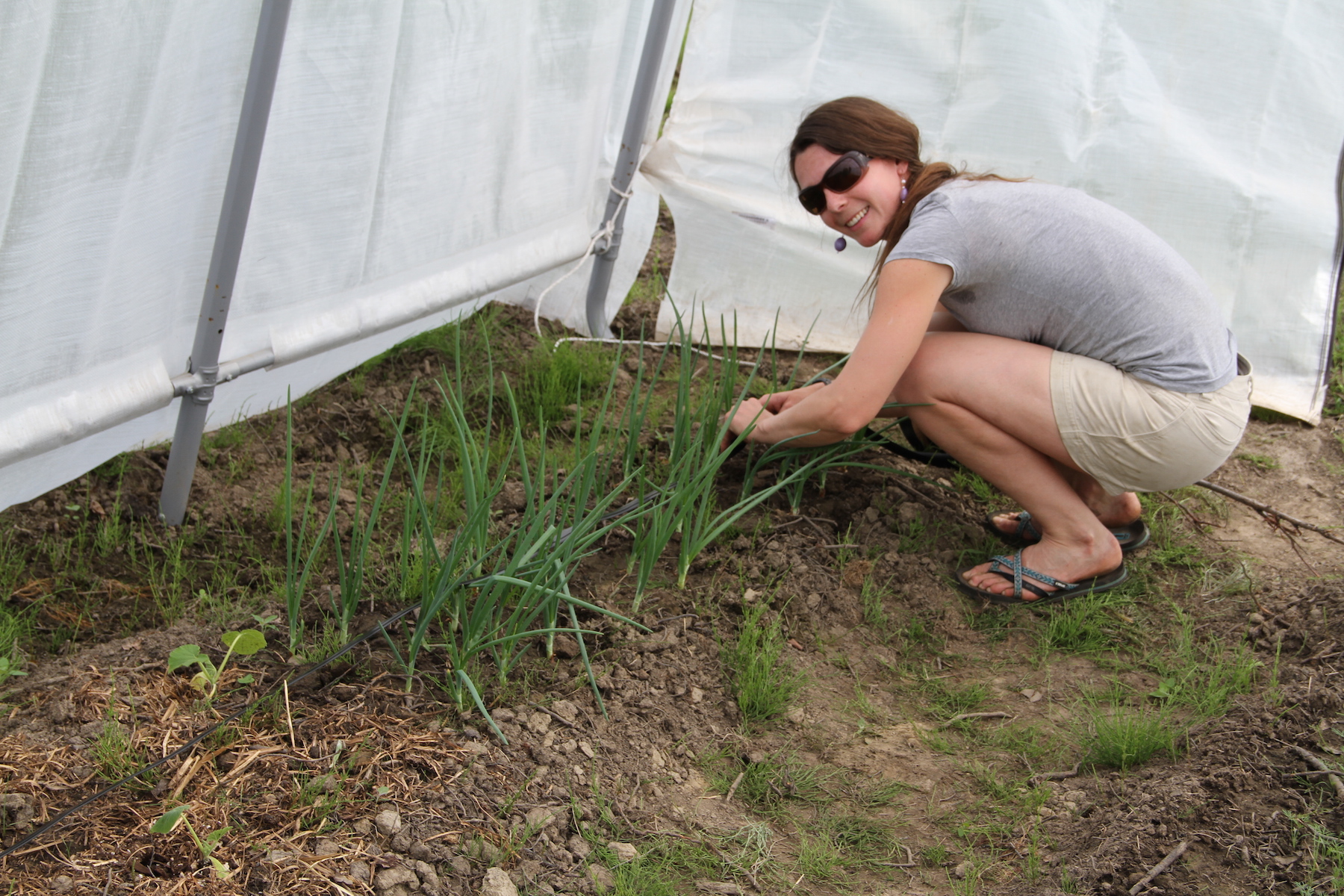If you enjoy unwinding, unkinking and dragging hoses hither and thither in your yard and garden or lugging watering cans around, then stop reading. If you want to save water and fertilizer, weed less and relieve yourself of a sometimes twice-daily task, then read on. Drip irrigation (or trickle irrigation) can do all this for you and more.

Wide beds may require multiple drip lines.
When you water with a hose or watering can, it’s difficult to water thoroughly because it tends to pool on the surface and run off, especially if your soil doesn’t have adequate organic matter. You also get more evaporation with these methods. As the name implies, drip irrigation slowly dribbles water to plants through equally spaced holes in drip lines or through emitters. This minimizes evaporation and runoff and deeply waters plants, which results in more robust root systems. It also keeps plant foliage dry, which tends to reduce pests and disease.
The fact that you can add a timer and automate your irrigation system is yet another compelling reason to set up a drip irrigation system. Go fish, hunt or do whatever it is you like to do in the summer without stressing about your garden while you’re gone.

Here, I am setting up a drip-irrigation system in my hoop house. Photo by Donavan Kienenberger.
Setting up a drip irrigation system for the first time can be daunting because of the vast array of products and systems available. I think the best way to start is with an all-inclusive drip irrigation kit. You can get a kit for hanging baskets or containers, raised beds, a greenhouse or a garden in the ground. Basic kits are as little as $60. I’ve found the customer service from companies that sell drip irrigation supplies very helpful when I had questions as well.
Once you’ve mastered a basic system, you should be able to tackle a more complex system that better suits your needs. If you have a large, varied landscape and want to automate irrigation throughout, you might consider contracting it out and adding a smart controller. Smart controllers vary irrigation levels for multiple zones based on current weather, rain sensors and past history. But for a small garden or yard, that is overkill.
Although the specific components of your irrigation system will vary depending on your needs, everyone should use an approved backflow-prevention device and, unless you have your own well or holding tank, you are legally required to do so.
Other common components of drip irrigation systems include a filter, pressure regulator and fertilizer injector. The order of operations matters. I recommend setting up these components in the following order: water source, timer, backflow preventer, filter, pressure regulator and fertilizer injector.
The other nice thing about drip irrigation is that it does not require much pressure, so if you don’t have running water, you can set up a gravity-fed system. Learn more from UAF Extension’s publication on the topic and this video.
Fair warning—once you set up a drip irrigation system, you might find yourself drastically expanding your garden with all of your extra time!
Previously published in the Fairbanks Daily News-Miner June 17, 2017.